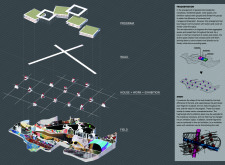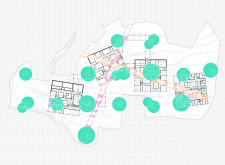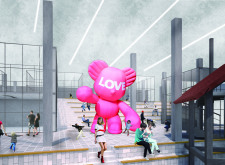5 key facts about this project
Artist Workspaces and Exhibition Areas
The project features artist workspaces that are individually tailored to enhance productivity while also nurturing collaboration within the community. These areas provide artists with privacy to develop their craft but are also strategically connected to communal exhibition spaces. These spaces are designed to be adaptable, allowing for various forms of artistic presentation while maintaining a connection with the outdoors through large glass facades. This openness invites visitors and residents to engage with the art in a more fluid manner.
Sustainable Design and Materiality
Playground Village employs sustainable architectural practices, with green roofs and natural ventilation embedded in the design to promote ecological balance. The choice of materials is essential; concrete provides durability, while steel offers structural integrity. Additionally, the use of glass facilitates natural light, blending the interior with the natural landscape. Wood elements introduce warmth and residential comfort, creating a welcoming atmosphere. These materials collectively define the project’s aesthetic and functional qualities while emphasizing sustainability.
Community Engagement and Experiential Learning
Central to Playground Village is the objective of fostering community engagement through experiential learning. The design includes pathways that not only facilitate movement but also serve as artistic trails, enhancing the visitor experience. Workshops and collaborative art creation activities are integrated into the project, allowing for participation from the public. This engagement is further supported by multifunctional gathering spaces within the green landscape, encouraging social interaction and artistic expression.
In summary, Playground Village represents a thoughtful integration of art, architecture, and ecology. Its unique design approach focuses on community involvement, sustainable practices, and the interaction of natural and built environments.
For a more comprehensive understanding of the project, readers are encouraged to explore the architectural plans, sections, and designs to gain deeper insights into the architectural ideas that inform Playground Village.


























